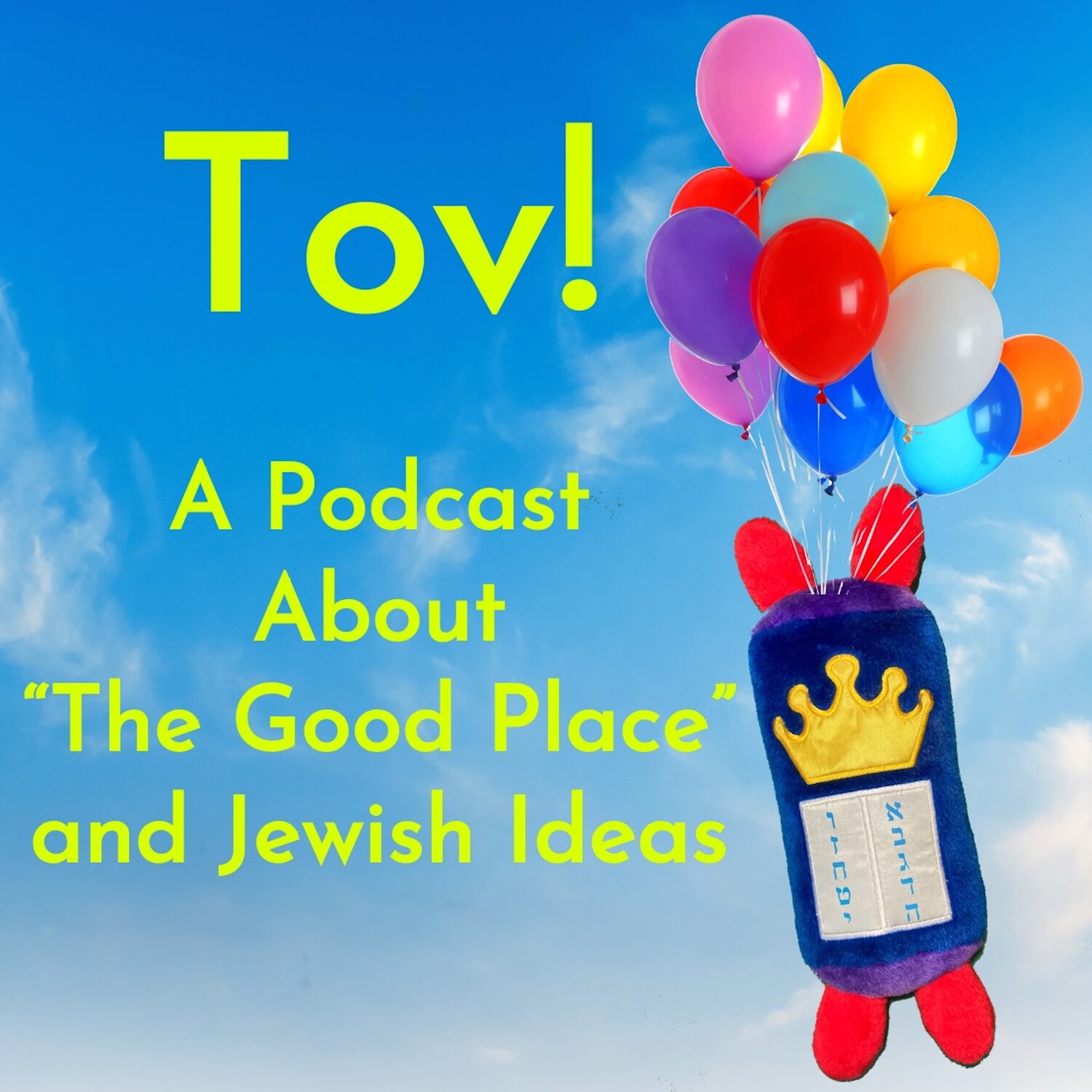The Big Jewish Idea of “The Good Place”: Teshuvah תְּשׁוּבָה
Literally “coming back” or “returning.”
This is the word often translated as “repentance” but it’s better to start fresh.
Teshuvah is the Jewish concept for self-correction, personal change, redirecting.
Terms and Concepts
Tov good!
Mitzvah a Torah commandment, a good deed, an act of goodness+holiness
Torah the original Jewish book, the Jewish term for “Judaism” as a whole or the teachings of Judaism in general or in a specific area
Nefesh and Neshama two terms for soul in Jewish thought
Aveirah (ah-vay-rah) wrong; the opposite of a good act — from the root for passing to the other side
Olam Ha-ba the World to Come (contrast with Olam Ha-zeh This World, and Gehenna the Jewish Bad Place, which is named for a valley in Jerusalem where in biblical times human sacrifice was practiced by a non-Israelite tribe)
Selichah forgiveness
Kippur cleansing from the residue of doing-wrong; often “atonement” from “at-one”, a cleansing that removes the barrier between humans and the Divine
Gilgul Nefashot cycling/circle of souls'; the Jewish term for reincarnation
Tocho k’varo “one’s inside is like one’s outside”
Vidui confession, but not only of the bad but the good; essentially acknowledgment, telling what really is, owning up; same Hebrew root as todah thanks or gratitude
Yetzer tov, Yetzer ra good nature, bad nature — the ingrained parts of our “heart” that are either generous and serving the Divine, or self-centered and greedy and prone to idolize
Halacha Jewish law, in its specifics
Beshert or Bashert or Beshayrt Yiddish word for soulmate
Parasha weekly portion of the Torah read in synagogue or studied during the week
Unetaneh Tokef (oo-ne-tah-neh toe-kef) a classic prayer in the liturgy for Rosh Hashanah and Yom Kippur, with the image of God reviewing the book where each of us have written the story of the deeds of our past year and setting a destiny for the coming year. (Too often taken literally and thus distancing people from Jewish theology!)
Hochay’ach tochi’ach or tochacha the principle that we are obligated to correct, criticize, or set right someone else if we can, based on Leviticus 19:17
Some Jewish Books, Texts, Etc.
Torah specifically the first five books of the Bible, and also the original Jewish term for “Judaism”
Tanach the whole Jewish Bible, an acronym in Hebrew for Torah, Nevi’im (prophets), and Ketuvim (miscellaneous writings such as Psalms)
Megillah literally “scroll”, often specifically referring to the book of Esther in the Bible which is read out of its own scroll on the festival of Purim
Mishnah first compilation of Jewish law and practice since the Torah and the destruction of the Temple by the Romans, edited by Rabbi Yehudah Ha-Nasi in the Land of Israel around 200 C.E.
Pirkei Avot (pronounced peer-kay ah-vote) “Chapters of the Fathers”; collection of sayings and maxims of the early rabbis of the 2nd-3rd century C.E. Part of the Mishnah. Learn more about it here.
Talmud hard to summarize… compendium of discussions and explorations of Jewish law and often Jewish ideas and Torah stories; analytical and also free-associative; edited in two versions, in the Land of Israel in the 400s C.E. and in Babylonia in the 500s C.E.
Mishnah Torah Rabbi Moses Maimonides’ compendium of all of Jewish law from the 12th century C.E., compiled in a very organized way in straightforward Hebrew. Sometimes referred to as Rambam, the acronym for Maimonides’ own name
Hilchot Teshuvah “Laws” of teshuvah, a section in Maimonides’ Mishneh Torah
Midrash means seeking, exploration, and inquiry. It’s a term used generally for everything from interpreting a verse of Torah to more elaborate “fan fiction” around the Bible. It’s also used specifically to refer to compilations of midrash from the Talmudic period and a bit beyond.
Chasidism is a movement of Jewish spiritual renewal that began in the 1700s and continues today. Some of its typical characteristics include joyfulness, the mentorship of a “rebbe”, and the exploration of the mystically described aspects of divinity as also aspects of our own soul-character.
Mussar is an approach to ethical self-perfecting that combines Torah study about specific qualities with personal disciplines and group conversation. One work we refer to is Michtav Me-Eliyahu, “The Letter from Eliyahu” — a collection of teachings from a 20th century Mussar master named Rabbi Eliyahu Dessler.
Kabbalah Jewish mysticism. The central text of Kabbalah is the Zohar or “shining splendor”, which dates from Spain in the 13th century and was traditionally associated with 2nd century sage Rabbi Shimon bar Yochai.
Siddur prayerbook
Machzor special prayerbook for Rosh Hashanah and Yom Kippur
Some People, Authors, Commentators, Interpreters, Etc.
Rabbi Moses Maimonides, also known by his acronym Rambam (for Rabbi Moses ben Maimon) 12th century rabbi, physician and philosopher who integrated Talmud with Aristotelian science and philosophy; the greatest thinker in Jewish history
Rabbi Akiva sage from the 2nd century, oft-quoted in the Mishnah and Talmud, associated with creative interpretation of the Torah and activism against the Roman authorities of the time
Rabbi Shimon bar Yochai sage from the 2nd century, considered one of the early masters of Kabbalah
Reb Zusya of Hanipol 19th century chasidic master
Rabbi Yehuda Ha-Nasi late 2nd century editor of the Mishnah
Hillel and Shammai sages of the 1st century, peers and debate counterparts; they gave rise to intellectual schools known as Beit Hillel and Beit Shammai (house of Hillel, house of Shammai) who were known to debate each other and disagree over details and large points of Jewish law in the period of the Mishnah
Nachson ben Aminadav Torah figure from the tribe of Judah at the time of the Exodus; in midrash/legend he is imagined as going into the Sea of Reeds before it split, in an act of faith that sparked the sparked the Divine to continue the miracle

